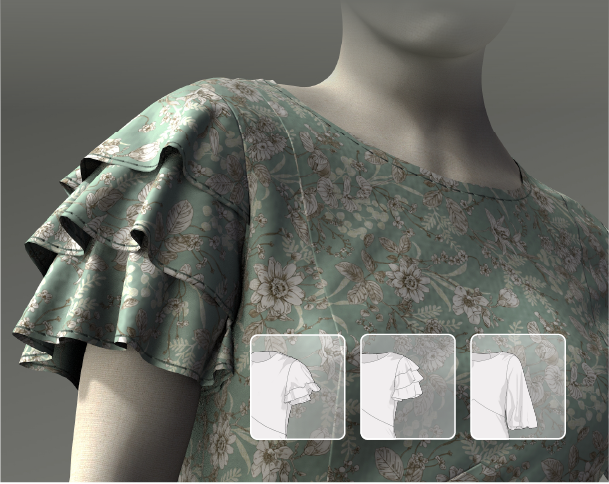IACDE 2024: 3D Design Brief A–Z Workshop with Dorelle McPherson
Browzwear’s Dorelle McPherson guided IACDE 3D Summit participants on building design briefs and streamlining workflows.
April 23, 2025

As part of the IACDE 2025 experience, Browzwear's Customer Enablement Manager, Dikla Yoktan, hosted a hands-on workshop inspired by the elegance of 1930s fashion. Named "Garden Party", the session digitally brought vintage silhouettes to life by guiding participants through creating three sleeve variations on the same dress base.
The 1930s were all about highlighting a tall, slim figure with hips and thighs closely fitted. Skirt lengths shifted depending on the occasion - day dresses typically hovered about 30 cm off the ground, while more formal afternoon and evening dresses flowed to the ankles or even brushed the floor.
But it was the sleeves that really brought personality to the look. With gathers, ruffles, and soft volume, they added a romantic yet structured touch to the silhouette. These distinctive sleeve styles became the focus of this workshop.
Using Browzwear’s VStitcher, Dikla demonstrated how to work with historical references in a modern digital environment. Participants were provided with base snapshots of a 1930s dress and guided through transforming it with three sleeve styles:
Inspired by puffed and flared silhouettes, the bell sleeve began with lengthening the sleeve and adding fullness using the “slash and spread” technique. Details like cuffs, slits, and buttons were added with precision, right down to fabric layering and simulation settings for the perfect drape.
Building on the same base, the second variation introduced ruffles layered one above the other. Participants learned how to extract sleeve edges, create symmetry, adjust volume, and stack multiple fabric layers, resulting in a highly decorative, vintage-inspired design.
The final look reimagined the sleeve by slicing it in half and spreading the pieces outward, then inserting ruffles between and below for added volume. Elastic-style shrinkage was used at the hem, simulating a gathered effect without a traditional cuff.
Throughout the session, Dikla focused not just on how the garments were constructed, but also on how they were styled. She encouraged participants to experiment with historically accurate materials like poplin and other natural fibers. To bring an extra layer of realism, attention was given to seam details and finishing touches, including precise, authentic-looking topstitching.
The session ended with a side-by-side 3D review of all three sleeve designs, allowing everyone to compare the volume, shape, and texture of each one in real time.
This workshop wasn’t just a trip down memory lane. It was a great example of how product development tools like VStitcher can help us preserve, explore, and even reinvent historical design techniques. It showed how digital technology can create room for experimentation and creative growth in today’s fast-moving, digital-first fashion world.
Dikla’s "Garden Party" session proved that the future of fashion can be deeply connected to the past, brought to life with modern, digital precision.
Browzwear’s Dorelle McPherson guided IACDE 3D Summit participants on building design briefs and streamlining workflows.
This workshop explore the integration of Substance 3D Designer and Substance 3D Sampler, offering an exploration of workflows for apparel designers.
In this tutorial, we'll walk you through various workflows to create your own stunning Substance 3D artworks.